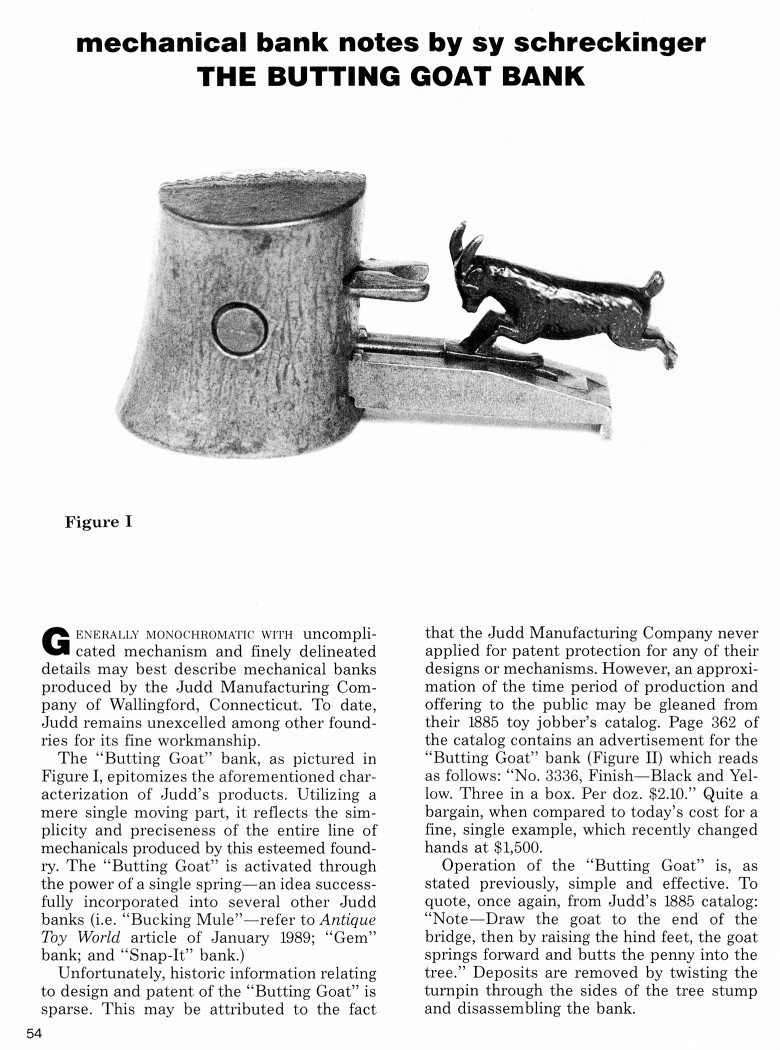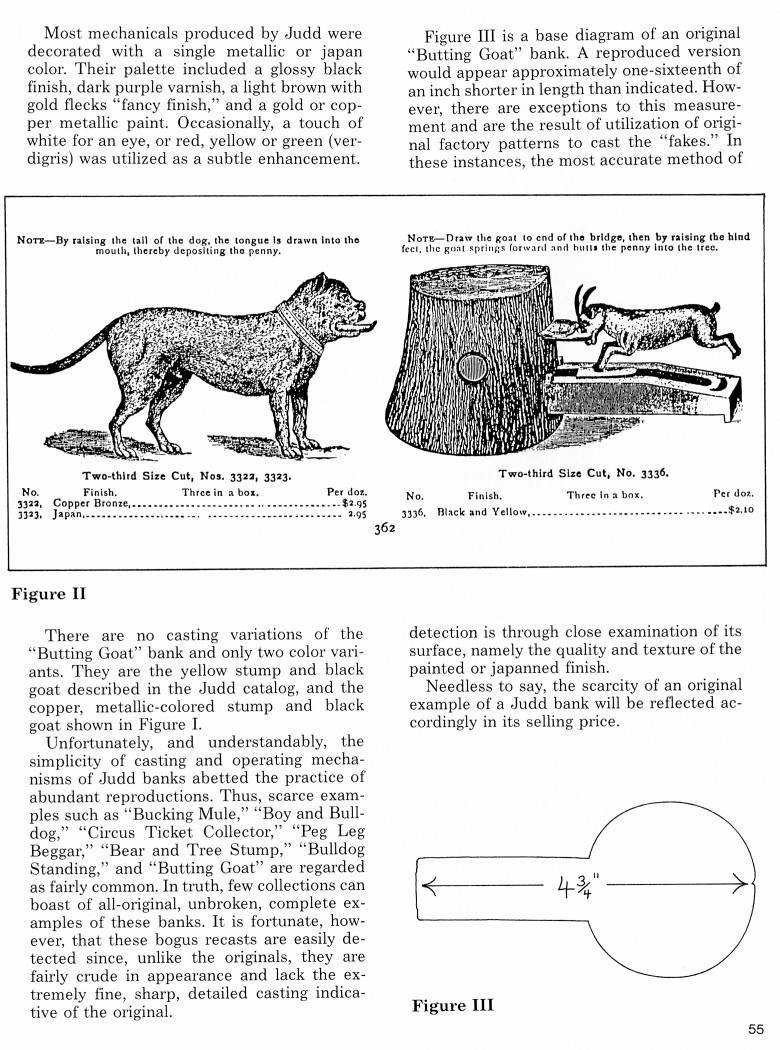|
The Butting Goat Bank
by Sy Schreckinger – ANTIQUE TOY WORLD Magazine – April, 1991
Generally monochromic with uncomplicated
mechanism and finely delineated details may best describe mechanical banks
produced by the Judd Manufacturing Company of Wallingford, Connecticut. To
date, Judd remains unexcelled among other foundries for its fine
workmanship.
The "Butting Goat" bank, as pictured in Figure I, epitomizes the
aforementioned characterization of Judd's products. Utilizing a mere
single moving part, it reflects the simplicity and preciseness of the
entire line of mechanicals produced by this esteemed foundry. The "Butting
Goat" is activated through the power of a single spring — an idea
successfully incorporated into several other Judd banks (i.e. "Bucking
Mule" — refer to Antique Toy World article of
January 1989; "Gem" bank; and
"Snap-It" bank.)
Unfortunately, historic information relating to design and patent of
the "Butting Goat" is sparse. This may be attributed to the fact that the
Judd Manufacturing Company never applied for patent protection for any of
their designs or mechanisms. However, an approximation of the time period
of production and offering to the public may be gleaned from their 1885
toy jobber's catalog. Page 362 of the catalog contains an advertisement
for the "Butting Goat" bank (Figure II) which reads as follows: "No. 3336,
Finish — Black and Yellow. Three in a box. Per doz. $2.10." Quite a bargain,
when compared to today's cost for a fine, single example, which recently
changed hands at $1,500.
Operation of the "Butting Goat" is, as stated previously, simple and
effective. To quote, once again, from Judd's 1885 catalog: "Note — Draw the
goat to the end of the bridge, then by raising the hind feet, the goat
springs forward and butts the penny into the tree." Deposits are removed
by twisting the turn pin through the sides of the tree stump and
disassembling the bank.
Most mechanicals produced by Judd were decorated with a single
metallic or japan color. Their palette included a glossy black finish,
dark purple varnish, a light brown with gold flecks "fancy finish," and a
gold or copper metallic paint. Occasionally, a touch of white for an eye,
or red, yellow or green (verdigris) was utilized as a subtle enhancement.
There are no casting variations of the "Butting Goat" bank and only
two color variants. They are the yellow stump and black goat described in
the Judd catalog, and the copper, metallic-colored stump and black goat
shown in Figure I.
Unfortunately, and understandably, the simplicity of casting and
operating mechanisms of Judd banks abetted the practice of abundant
reproductions. Thus, scarce examples such as "Bucking Mule," "Boy and
Bulldog," "Circus Ticket Collector," "Peg Leg Beggar," "Bear and Tree
Stump," "Bulldog Standing," and "Butting Goat" are regarded as fairly
common. In truth, few collections can boast of all-original, unbroken,
complete examples of these banks. It is fortunate, however, that these
bogus recasts are easily detected since, unlike the originals, they are
fairly crude in appearance and lack the extremely fine, sharp, detailed
casting indicative of the original.
Figure III is a base diagram of an original "Butting Goat" bank. A
reproduced version would appear approximately one-sixteenth of an inch
shorter in length than indicated. However, there are exceptions to this
measurement and are the result of utilization of original factory
patterns to cast the "fakes." In these instances, the most accurate method
of detection is through close examination of its surface, namely the
quality and texture of the painted or japanned finish.
Needless to say, the scarcity of an original example of
a Judd bank will be reflected accordingly in its selling price.
|


